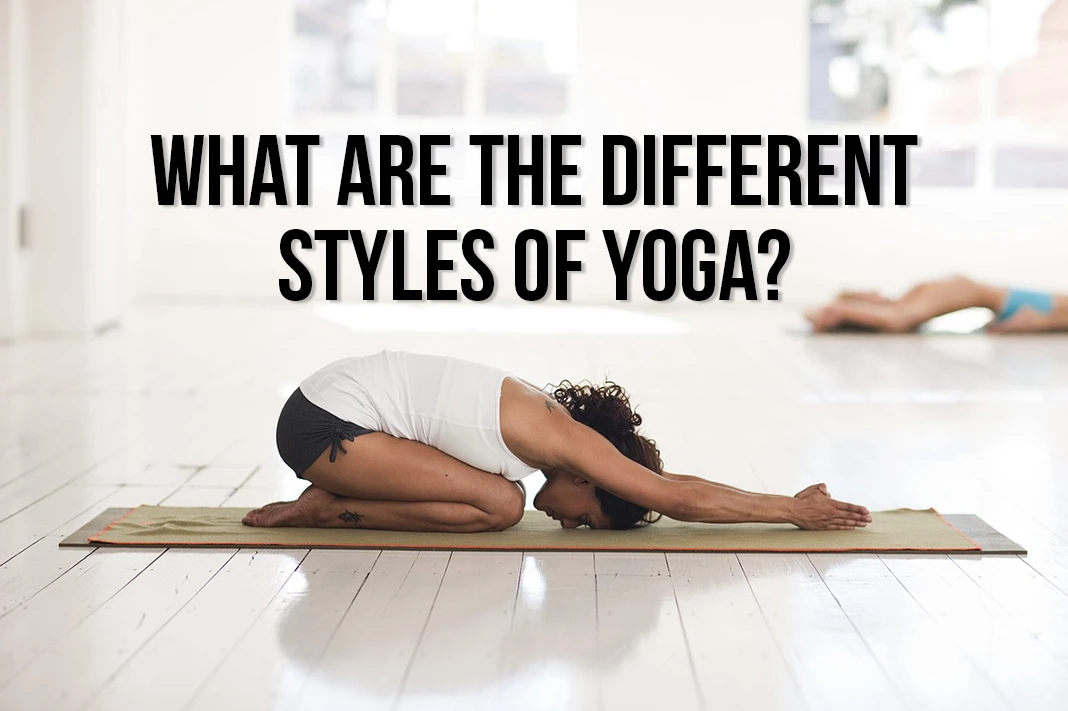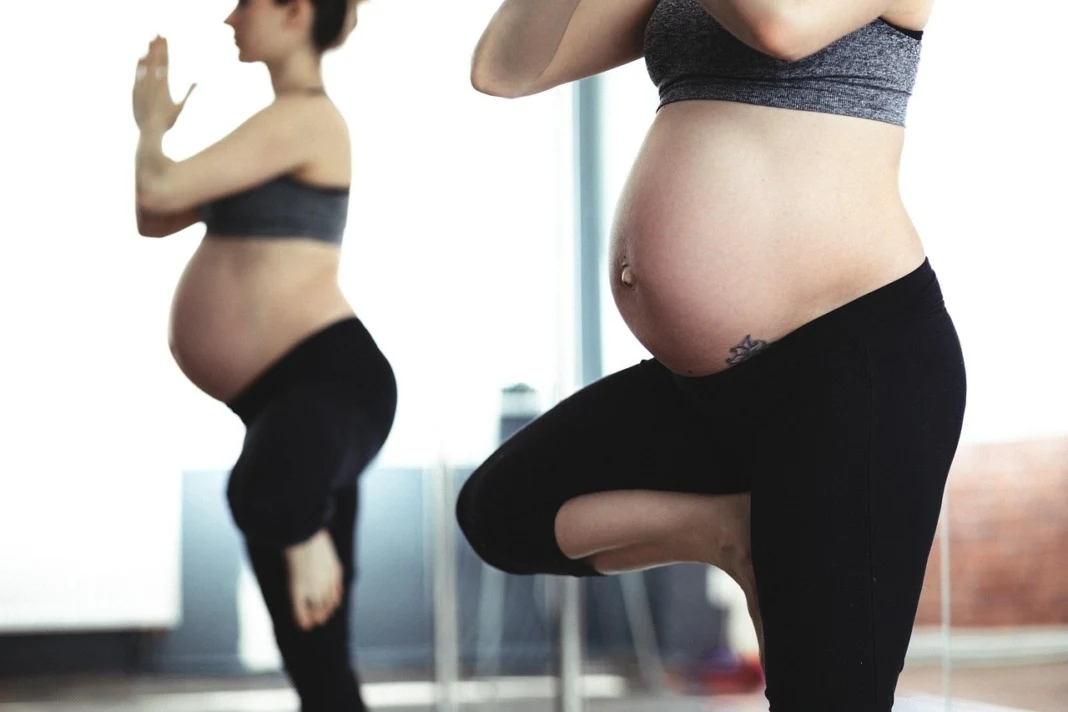Yoga Asana is the physical practice of yoga. Asana has evolved from a simple seat known as Sukhasana (pronounced soo-kah-san-ah) into a blend of yoga poses and styles, with each focusing on a particular set of benefits and principles.
There are hundreds of different styles of yoga being practiced around the world. In this article, we will highlight the more common styles that you may find in your gym or local yoga studio.
The Benefits of Practicing Yoga
No matter what style of yoga you choose to practice, you will likely see improvements in many areas of your physical and mental health. By practicing regularly you may experience some or ALL of the following benefits:
- Increased flexibility
- Increased concentration and mindfulness
- Increased metabolism
- Increased muscle toning and strength
- Improved posture
- Improved circulatory and cardio health
- Alleviate injuries
- Can help with chronic pain
- Better sleep
- Increased energy levels
- Improve athletic performance
- Detoxifies your body
- Released endorphins that can improve your mood
- Alleviates anxiety and depression
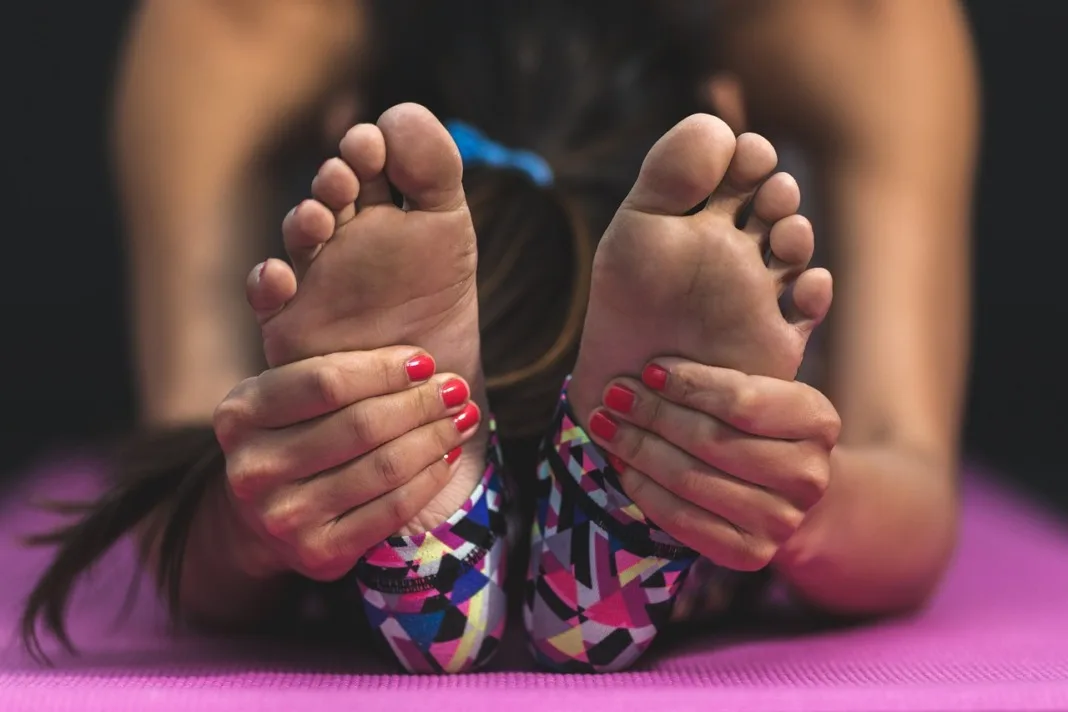
These are just some of the benefits of yoga and they differ from one person to the next. There are thousands of benefits and we only touched upon some. Just like the benefits, there is also a slew of yoga styles fit for every practitioner, new or experienced.
As you navigate down the list, the practices will go from vigorous to relaxing passive classes. Here are some of the most popular styles of yoga that you will find in your local gym and yoga studio today:
- Vinyasa
- Power
- Heated/Hot
- Ashtanga
- Jivamukti
- Kundalini
- Hatha Yoga
- Iyengar
- Yin
- Prenatal Yoga
- Restorative
Below is a breakdown of the basic yoga styles to help you figure out which class is right for you.
Different Styles of Yoga
#1 Vinyasa
Vinyasa means “connection.” In this yoga style, the poses flow into one another and are linked by breath. Each movement corresponds to an inhalation or an exhalation. A vinyasa class are known for its fluidity, creative sequencing, and can be fast paced and physically challenging.
Each pose, or asana, is connected by the breath, which makes movements more fluid and dance-like as they move into one another. Poses are typically linked together by vinyasas, or a sequence of plank, Chaturanga, Upward-Facing Dog, and Downward-Facing Dog.
A vinyasa practice can feel like a free-form dance on your mat, with the poses moving into each other to create a flow. Vinyasa yoga is one of the most popular styles currently practiced in the U.S. When you’re attending a yoga class without a description, chances are it may be a vinyasa style class.
Vinyasa classes are inspired by Ashtanga, but do not follow a specific format or sequence. Vinyasa classes can vary greatly from one another, being either fast or slow, alignment-based or not. What all Vinyasa classes do have in common, though, is that the body moves along with the breath.
Who should practice Vinyasa yoga?
Yoga students who love creative expression in their movements and love a challenging class. Vinyasa is dance-like and practitioners tend to fall in love with the fluidity of the practice.
#2 Power
This more vigorous style is essentially a vinyasa flow with added strength and plyometrics. Teachers may add in extra plank poses, push-ups, faster movements, and more aerobic activities like jumping forward and backward.
Like its Ashtanga roots, Power yoga is fast-paced, strength-based, and far from gentle. Classes vary from teacher-to-teacher but generally involve moving with the breath in between sun salutations and vinyasas. This style of yoga usually skips the chanting, meditation, and spiritual talks found in the more traditional styles of yoga.
Power yoga is a challenging, workout style of yoga born in the 1990’s and coined by world reknown yoga instructor Bryan Kest. The practice is also inspired by Ashtanga and is rigorous, but doesn’t stick to a set sequence of poses.
Power yoga mainly focuses on the abdominal region, while making you sweat. Some practitioners think Power yoga is somewhat similar to Ashtanga yoga and for good reason! The creators of Power yoga studied under Pattabhi Jois, the Father of Ashtanga.
Who should practice Power yoga?
Power yoga is perfect for highly athletic practitioners, and those who are physically fit and not injured. People who love a purely physical practice will appreciate power yoga. It is important to note that you should not exert yourself if you are just starting a power yoga practice, as injury could occur.
#3 Hot or Heated
Popularized by the well-known Bikram yoga, this style is practiced in a hot room anywhere between 90 to 108 degrees F. Usually, the heat is manufactured by space heaters or a central heating system. The purpose of hot yoga is to increase flexibility through heat.
Heated yoga will typically have longer holds and set sequences that instructors follow. Not much experience is necessary but you will need a towel and a bottle of cold water to keep cool.
We also recommend getting a super grippy yoga mat to prevent slippage on the yoga mat.
Related: Sharklet Antimicrobial Yoga Mat Review
#4 Ashtanga
Popularized by Pattabhi Jois in the 1970s, Ashtanga is a rigorous and physically demanding style of yoga. It’s similar to Vinyasa in that each movement is linked to the breath. However, in Ashtanga, poses are always practiced in a strict order, meaning that every class is the same.
The more advanced series include challenging postures, requiring strength and flexibility. Like Vinyasa yoga, the postures flow from one to the next, but always in a particular order. Classes are usually heated and fast-paced, full of vinyasas, and filled with the sound of ujjayi breathing.
The only official Ashtanga certification is in Mysore, India at the Shri K. Pattabhi Jois Ashtanga Yoga Institute. There are unofficial certification programs throughout the world, but this is frowned upon by the die-hard Ashtanga community.
Who should practice Ashtanga yoga?
Ashtanga is great for those who like order, repetition, discipline, and a physically demanding form of yoga. While some might find the repetitiveness boring, others use it to as a form of discipline and to maintain focus. People who are in good health and require a disciplined practice may benefit from Ashtanga yoga.
#5 Jivamukti Yoga
Created in the 1980s, by Sharon Gannon and David Life, Jivamukti borrows from several styles of yoga including Vinyasa. Jivamukti is an adaption of the Sanskrit term jivanmukti which means self-realization. It’s physically intense and focuses on yogic philosophy.
And classes go beyond just the postures and can include spiritual teaching, chanting, meditation, breathwork, and music.
Jivamukti is based on five tenets: bhakti (devotion), ahimsa (non-violence), nada (sound), dhyana (meditation), and shastra (study) of ancient scriptures. Class sequences are always changing to incorporate a “Focus of the Month.” It’s not reduced to the physical yoga practiced in most yoga studios today, but rather strongly focuses on spirituality.
Who should practice Jivamukti yoga?
Those looking for a modern approach to spirituality yet has a physically demanding practice, and to be part of a dedicated yoga community. Jivamukti students are strongly encouraged to embrace a spiritual lifestyle which includes veganism.
#6 Kundalini Yoga
The goal of Kundalini yoga is to awaken the kundalini (translates to “coiled snake”), or dormant energy at the base of the spine. Thus Kundalini is dubbed the “yoga of awareness.” Through the combinations of vigorous movements and breathwork, Kundalini provides an intense and energizing effect on your practice. This style of yoga also includes mantras, pranayama, kriya, relaxation, and meditation.
The dormant energy is traditionally represented as a coiled serpent seated at the base of the spine. When it uncoils, it rises up a channel along the spinal cord and passes through and taps into the chakras. Once it reaches the seventh chakra (or sahasrara), one will experience the ultimate goal of spiritual enlightenment.
Most U.S. Kundalini yoga certification courses are associated with Yogi Bhajan, a proclaimed a master of Kundalini yoga. In 1969 at the age of 16, Yogi Bhajan, a Sikh, brought Kundalini yoga to the West. The Kundalini Research Institute officially promotes Yogi Bhajan’s teachings and offers teacher trainings in 52 countries. Yogi Bhajan also created the 3HO (Healthy, Happy, Holy Organization) Foundation.
Many but not all of Bhajan’s followers are also Sikhs, hence the white turbans and attire. Wearing white is also a way to increase mindfulness (being mindful to keeping clothes white), to increase your aura, and also represents saucha (cleanliness). Famous Kundalini practitioners include Snatam Kaur and Guru Ram Das.
Who should practice Kundalini yoga?
Those looking for an awareness-based style of yoga that has a noticeable energetic impact. Kundalini yoga offers a close-knit community (or sangha) for those who are dedicated to its teachings.
#7 Hatha yoga
This classic yoga style refers to the physical practice of yoga known as asana. Essentially, all modern physical yoga styles are derived from hatha yoga. Hatha is a term for all yoga, but Hatha-specific classes feature long holds that last from 15 seconds intervals to several minutes.
The name ha-tha is derived from “ha” meaning sun and “tha” meaning moon, symbolizing the balance between the light and the dark and the masculine and the feminine within all of us. Teachers are given the creative freedom to form sequences that align the physical body as well as the mind.
Classes are generally slower and less vigorous than Vinyasa and Ashtanga. They can still build heat with multiple rounds of Sun Salutations and as many advanced postures as the teacher decides to include. A hatha class may be comprised of basic poses, but it will still be challenging as you hold the postures. Classes traditionally include pranayama, meditation, and yoga philosophy, making for a well-rounded yoga practice.
Who should practice Hatha yoga?
Students who want a balanced practice which includes strength yet is still relaxing. Hatha is great for an all levels practice. You can make the practice as challenging or as relaxing as you would like it to be.
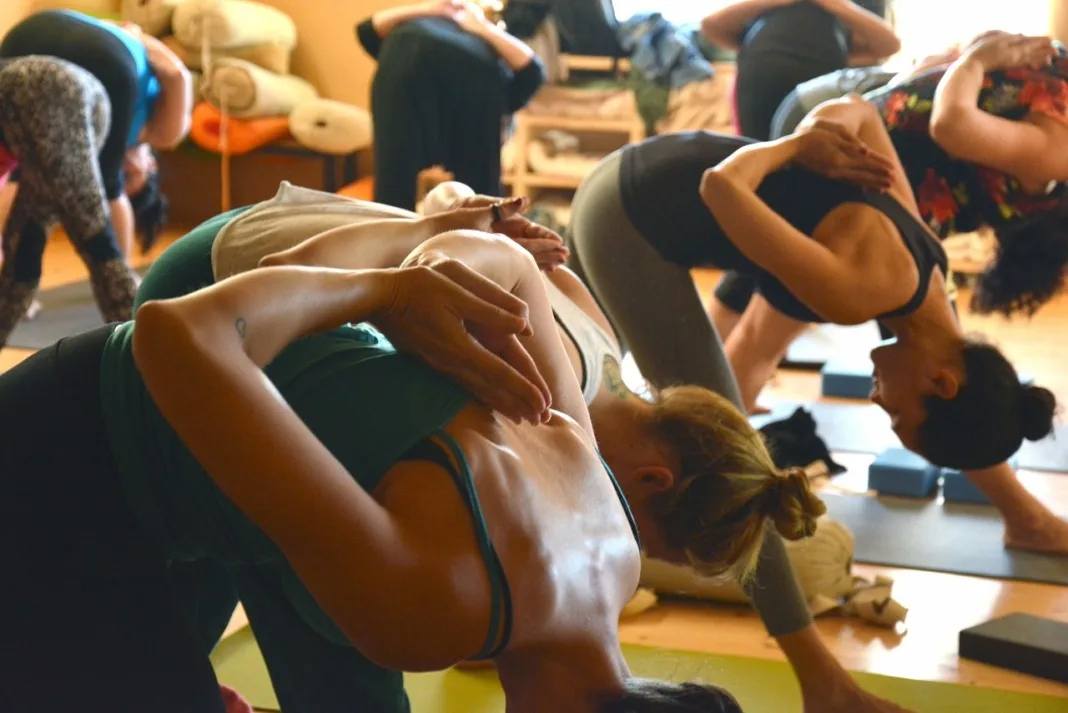
#8 Iyengar Yoga
Based on the teachings of B.K.S. Iyengar, this style approaches yoga in a scientific and therapeutic manner. Props are used extensively (includes all kinds of blocks, chairs, blankets, and belts), and poses are held for long durations of time in order to achieve nearly perfect alignment.
Props are used therapeutically and by all levels of Iyengar students (beginner to advanced). Teachers apply concise alignment in Iyengar yoga, and will openly correct bad posture. Aside from focusing on correctly aligned asanas, Iyengar yoga also incorporates pranayama, meditation, and yogic philosophy.
Only certified Iyengar teachers can use the Iyengar name and teach Iyengar yoga. Potential teachers of Iyengar should be prepared to become devotees, as they’re asked to teach and practice Iyengar yoga only. Iyengar yoga has many certification levels that may take several years of study to complete.
The first level lasts between two to five years, and that’s only after passing the introductory level two course that the student is certified to teach.
Who should practice Iyengar yoga?
Iyenger is perfect for practitioners who have a strong interest in anatomy and alignment. Iyengar yoga is the most technical form of yoga and is great for people who prefer subtle movements and desire perfect form.
#9 Yin
Yin is a slow-paced and passive yoga style that is characterized by longer hold times in poses that open with the use of gravity in asanas that focus on the region between the navel and knees. Yin yoga targets the connective tissue, ligaments, tendons, fascia, and even the bones to create flexibility. Instead of the opposite of yang poses, or more muscular poses, like Warriors, yin yoga focuses on the joints.
Poses can be held for up to 20 minutes, or however long the body needs, with the aim of improving flexibility while cultivating a silent mind. Since the goal of yin yoga is to fully relax the body, instead of tensing and building strength, yin is an excellent counterpart to more active or “yang” practices such as Ashtanga and Vinyasa yoga. Yin yoga serves as a complement to other forms of exercise and not meant to be just practiced solely.
The Yin Yoga Institute, which was established by Paulie Zink, offers 100, 200, and 200+ hour yin-based RYT’s around the country. According to the institute, these are the only official Yin yoga teacher training courses available. Other yoga schools offer Yin yoga intensives and alternatives.
Who should practice Yin yoga?
Yin yoga is perfect for those who like to take it slow and delve deeper into certain yoga postures. Yin yoga is great for beginners and those who are dealing with an injury.
#10 Prenatal Yoga
Prenatal yoga is exactly how it sounds. It’s yoga for pregnant women and sometimes expecting fathers accompanying women. Poses are modified so that they are safe for both the expecting mother and her baby.
A Prenatal yoga practice is the safest way for an expectant mother to stay limber, prevent pain, and keep her mind happy and calm. Prenatal yoga can also make labor much easier. Breathwork and hip openers prepare the body for childbirth.
While the early days of pregnancy don’t require too many yoga modifications, the second and third trimester often do. It is important to let your instructor know where you are in your pregnancy.
Aside from its physical benefits, prenatal classes create a community for expectant mothers. Many mothers will find emotional support and motivation from their prenatal yoga teacher and fellow yoga students.
Most prenatal yoga teacher trainings are around 85 hours and have a 200-hour RYT pre-requisite. Trainings are usually available in any city with an active yoga community. The curriculum is very specific to pregnancy and includes poses and modifications for each trimester and sometimes even education on the birthing process.
Who should practice Prenatal yoga?
Pregnant women who would like to maintain a yoga practice throughout pregnancy, pregnant women who are new to yoga and want a smoother, healthier pregnancy, and pregnant women looking for peer support throughout the process.
#11 Restorative
This healing style of yoga is designed to restore your body to its natural calm state. Much of the focus is on stillness and centering. Restorative yoga classes utilize long passive poses combined with bolsters, blankets, and other yummy accouterments to make your yoga experience feel great.
Much like Iyengar yoga, Restorative yoga makes full use of props. However, there’s a stark contrast between the two. Here, props are used to facilitate complete relaxation for the ultimate stress-relief, whereas Iyengar focuses more on the perfection of poses.
In Restorative yoga, poses are set up so that there’s no muscular contraction. The body might be in a backbend, but with the generous use of blankets, blocks, and bolsters make the stretch passive.
The spine is moved in all directions—forward, backward, and side-to-side, but most poses are in seated or reclined positions.
Prop-supported inversions are also included as part of a well-balanced sequence. Poses can be held for as long as 20 minutes, so that the body and mind get a chance to fully relax.
Restorative yoga brings relaxation to a very intensive yoga practice. It’s the kind of class that’s not only perfect for unwinding on a Sunday night before a week of work, but also to open up any physical and emotional blockages.
Restorative teacher trainings are taught across the country and usually offered in a short 20 to 40 hour course. Most Restorative trainings will require a 200-hour RYT prerequisite. Judith Lasater, who’s credited with popularizing Restorative yoga, offers her own certification program called Relax and Renew. Courses are 20 hours, taught over the span of five days, and offered all over the world.
Who should practice Restorative yoga?
Anyone who is recovering from an injury, chronically ill, under stress, or looking to balance a more intensive yoga practice. Everyone could use a bit of Restorative yoga in their life, which explains why Savasana is one of the yoga community’s most beloved yoga poses.
We hope his list was helpful in helping you understand some common styles of yoga practiced in today’s gyms and studios. If you have any questions or need recommendations on which styles to try, please email us and we can help get you into a class that is best for you.
List of Other Common Styles of Yoga (includes the styles listed above):
- Acro Yoga
- Acu-Yoga
- Aerial Yoga
- Amrit
- Ananda
- Anusara
- Ashtanga
- Baptiste
- Bhakti/Devotional
- Bikram
- Chi Kung
- Forrest Yoga
- Hatha
- Instruction
- Integral
- Integrative
- ISHTA
- Iyengar
- Japa
- Jivamukti
- Jnana
- Kali Ray TriYoga
- Kharma
- Kid’s Yoga
- Kripalu
- Kundalini
- Laughing
- Naam Yoga Therapy
- Partner Yoga
- Phoenix Rising Power
- Power
- Prenatal
- Raja
- Restorative
- Sivananda
- Svaroopa®
- Thai Massage Yoga
- Viniyoga
- Vinyasa
- White Lotus
- Yin
- YogaFit® Personal Training
- Yoga Therapy
- Yoga Tune Up®
If you like this post, please pin it on Pinterest!
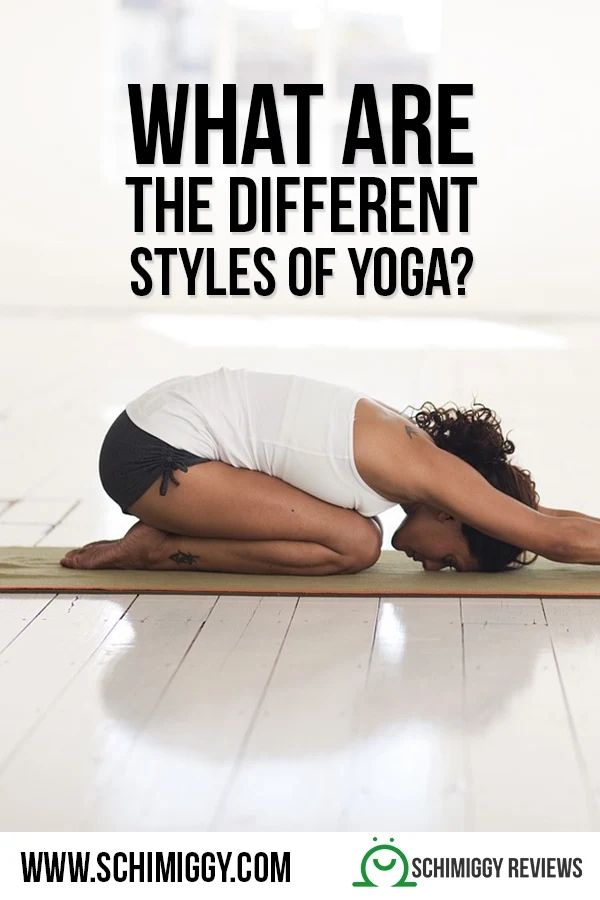
Thank you for visiting today! If you found this encouraging or informative, please connect with us on Instagram or TikTok. Sign up for our monthly newsletter for updates and more. We promise we won't spam you! Feel free to unsubscribe anytime. If you're a brand and want to work with us, please visit this page to get in touch.

